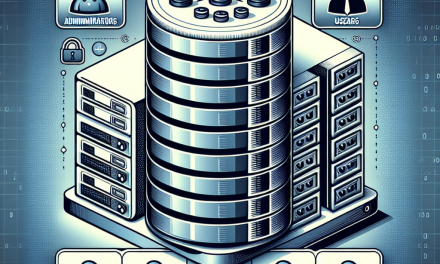In today’s rapidly evolving software landscape, the practice of Continuous Integration and Continuous Deployment (CI/CD) has become a cornerstone for efficient development cycles. However, with the power of automation comes the responsibility of maintaining security. Ensuring that your CI/CD pipelines are secure can help protect your systems from malicious attacks, data breaches, and other vulnerabilities. In this article, we’ll explore some best practices for securing CI/CD pipelines on Linux servers.
Understanding the Risks
Before implementing security measures, it’s essential to understand the potential risks associated with CI/CD pipelines. Common threats include:
- Unauthorized access: Attackers gaining access to sensitive environments and data.
- Code injection: Malicious code being introduced into the deployment process.
- Data leakage: Sensitive information being exposed during the build or deployment process.
- Dependency vulnerabilities: Using third-party libraries or dependencies that could introduce security flaws.
Best Practices for Securing CI/CD Pipelines
1. Enforce Role-Based Access Control (RBAC)
Implementing RBAC is critical in preventing unauthorized access to sensitive parts of your CI/CD pipeline. Ensure that only authorized users and automated systems have access to the necessary components based on their roles. Limit permissions to the minimum required (principle of least privilege) to reduce the risk of insider attacks.
2. Secure Secrets Management
Managing sensitive information, such as API keys, database passwords, and SSL certificates, is crucial. Avoid hardcoding secrets in your codebase. Instead, use a dedicated secrets management solution (e.g., HashiCorp Vault, AWS Secrets Manager) that provides encryption and fine-grained access controls.
3. Regularly Update Dependencies
Many security vulnerabilities stem from outdated components. Regularly audit and update all dependencies, libraries, and frameworks used in your projects. Tools such as npm audit, pip-audit, and Dependabot can help identify vulnerabilities in libraries.
4. Use Static Code Analysis
Incorporate static code analysis (SCA) tools in your CI/CD pipeline to detect vulnerabilities or coding standards violations early in the development process. This allows developers to address issues before they reach production. Tools like SonarQube or ESLint can aid in maintaining code quality and security.
5. Implement Container Security
If you’re using containerization tools like Docker in your pipeline, follow best practices such as:
- Use official images or build your own from scratch.
- Regularly scan container images for vulnerabilities.
- Ensure that containers run with the least privileges necessary.
- Implement network segmentation to limit the communication channels of containers.
6. Conduct Threat Modeling
Perform threat modeling at various stages in your CI/CD lifecycle to proactively identify potential threats and risk factors. This process helps prioritize security measures based on the identified risks, enabling a more effective defense strategy.
7. Enable Logging and Monitoring
Implement centralized logging and monitoring for your CI/CD pipeline. Tools like ELK Stack (Elasticsearch, Logstash, Kibana) or Prometheus can help you track access logs, build processes, and deployment events. This information is invaluable for detecting suspicious activities and auditing access.
8. Automate Testing and Quality Gates
Integrate automated testing into your pipeline, not just for functional tests but also for security testing (e.g., dynamic application security testing – DAST). Implement quality gates that prevent deployments with known vulnerabilities, ensuring only secure code is released.
9. Secure Communication Channels
Encrypt all communications between services in your CI/CD pipeline. Use TLS/SSL for all HTTP communications and secure shell (SSH) for access to servers. This ensures data confidentiality and integrity, preventing man-in-the-middle attacks.
10. Regularly Review and Audit Your Pipeline
Conduct regular reviews and audits of your CI/CD pipelines. This process should analyze the configurations, user access, and the overall security posture of your environments. Regular audits enable you to identify gaps and areas for improvement.
Conclusion
Securing CI/CD pipelines on Linux servers requires a proactive and multifaceted approach. By implementing these best practices, organizations can protect their development and deployment processes, ensuring the integrity and security of their software applications. Remember, security is not a one-time effort but an ongoing commitment to improving and adapting to new threats as they arise. As CI/CD continues to evolve, so too should your security strategies to keep pace with technological advancements and emerging risks.





